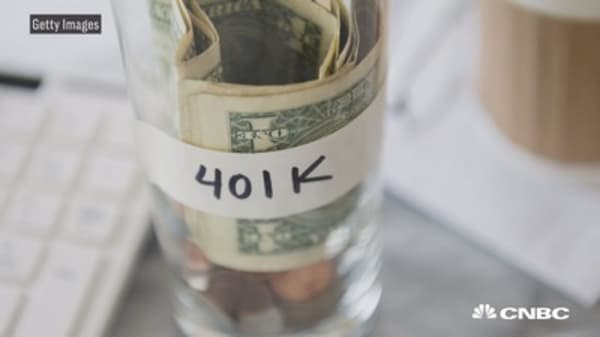If you turned 70½ in 2018 and you still haven't taken your first required minimum distribution from your individual retirement account, you're almost out of time.
The IRS requires individuals holding retirement accounts such as IRAs and 401(k) plans to start taking withdrawals from those accounts by April 1 in the year after they've turned 70½.
Each of these distributions is also taxable, so savers must also prepare to pay Uncle Sam.
After you've made that first distribution, you must take subsequent RMDs in the following years by Dec. 31.
show chapters Key tips for taking your required minimum distribution 5:17 PM ET Wed, 19 Dec 2018 | 01:22
Key tips for taking your required minimum distribution 5:17 PM ET Wed, 19 Dec 2018 | 01:22 That means savers who are just now taking their 2018 distribution this spring must take a second withdrawal — this time for 2019 — by the end of this year.
Failure to take the RMDs by the required date will result in a 50 percent excise tax on the amount you should have withdrawn.
"The deadline for people who turned 70½ last year is less than a week away," said Martin Schamis, head of wealth planning at Janney Montgomery Scott, a broker-dealer in Philadelphia.
"Once those RMDs begin, you don't really have much control over whether you take them or not," he said. "There isn't a lot you can do to lessen the tax hit that might be associated."
Here's what you should know if you're new to these mandatory retirement account withdrawals.
Calculation flubs Kristian Sekulic | E+ | Getty Images
Kristian Sekulic | E+ | Getty Images Perhaps the easiest way to botch your first RMD is to mistakenly take the wrong amount.
Let's say that you own multiple IRAs and hold multiple 401(k) accounts at different employers.
In that case, you need to calculate the RMD for each IRA separately each year. You can however, withdraw the total amount from just one of your IRAs.
As for the 401(k) plans, you must calculate and take the RMD from each plan.
"You can't take money from an IRA to satisfy an RMD on a 401(k)," said Ed Slott, CPA and founder of Ed Slott & Co. in Rockville Centre, New York.
Doubling up distributions show chapters How retirees can avoid costly required minimum distribution penalties 9:58 AM ET Mon, 4 Dec 2017 | 02:20
How retirees can avoid costly required minimum distribution penalties 9:58 AM ET Mon, 4 Dec 2017 | 02:20 One error married couples tend to make is to take the distribution for both spouses from one account, said Slott.
For instance, a husband with a large IRA might try to take the RMD for himself and his wife from that account, instead of letting her withdraw from her own IRA.
More from Fixed Income Strategies:
Why advisors are bullish on real estate for steady cash
This is why 'super savers' are retiring earlier than most
Medicare won't cover this key expense
This move isn't permitted. Each spouse must take the RMD from his or her own respective account.
"In this case, all the husband did was take too much from his IRA and not enough from his wife's account — and now she's subject to the 50 percent penalty," said Slott.
The No.1 misconception WHL | Getty Images
WHL | Getty Images Here's a question just about everyone asks, according to Slott. "Why not put the RMD in a Roth IRA? You've already paid the taxes."
You can't. The IRS forbids savers from reinvesting RMDs into tax-advantaged retirement accounts.
That doesn't preclude you from using those funds for other tax-planning plays, though.
Qualified charitable distribution: One way to avoid the tax hit on the RMD is to give the cash directly to charity through a qualified charitable distribution, said Schamis. This is only applicable to IRAs. The money you donate is excluded from your taxable income.
Pay the taxes on a Roth conversion: Maybe you want to convert other IRA funds to a Roth IRA after you've withdrawn your RMD. In this case, you can use the RMD money to pay the taxes on the conversion, Slott said.
Just remember that the RMD funds themselves cannot be converted to a Roth IRA.
Fund your taxable accounts: It's beneficial for retirees to build savings in different accounts — taxable, tax-free and tax-deferred — so that they have the option of adjusting their retirement income and managing their tax brackets in the future.
You can't put your RMD into an IRA or a Roth IRA, but you can sock it in a taxable brokerage account and allow it to grow.
Subscribe to CNBC on YouTube.
No comments:
Post a Comment